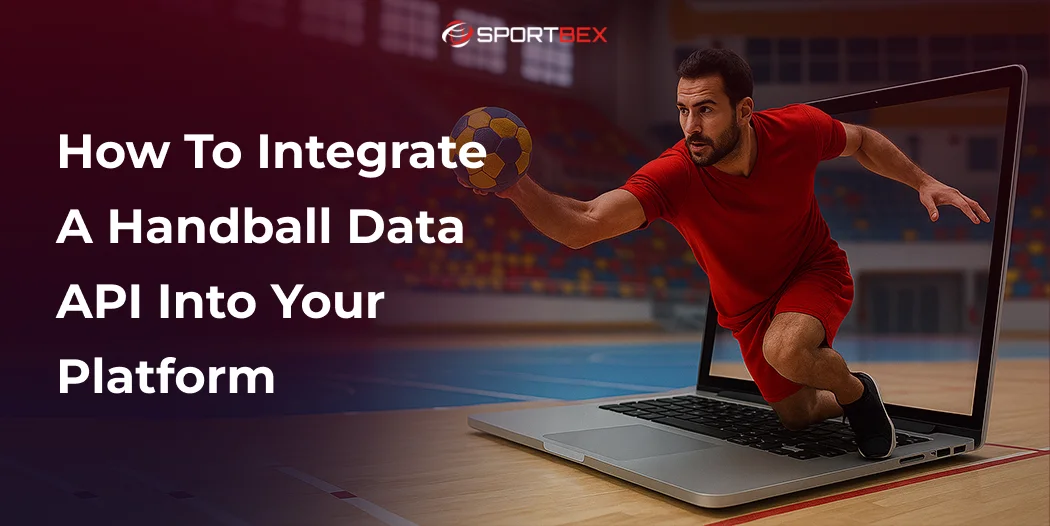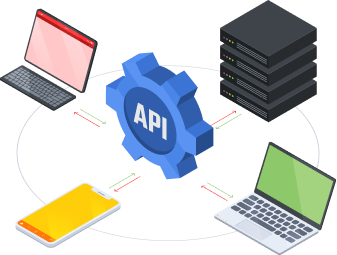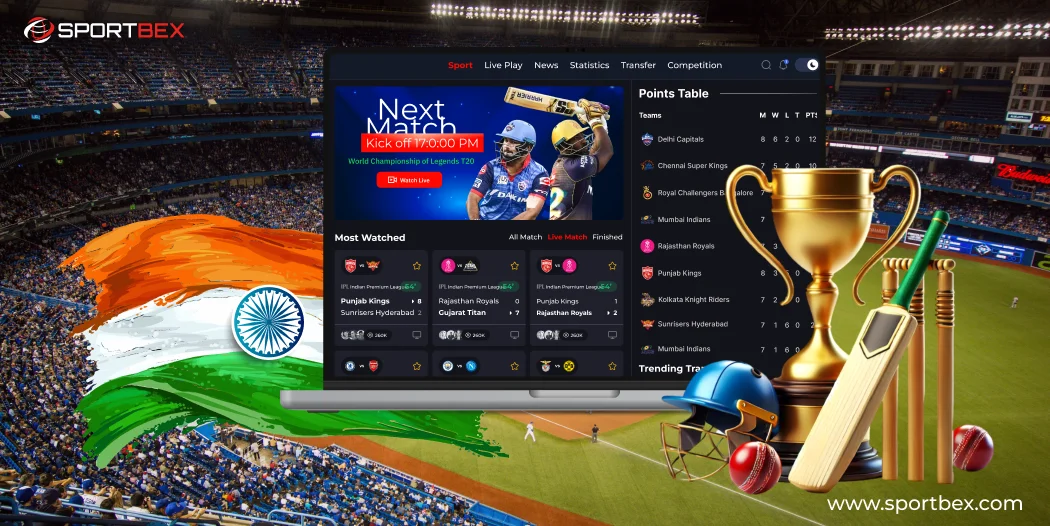To create a great user experience, you need real-time, reliable data that keeps people engaged. Handball fans also want complete and up-to-date match info—just like fans of bigger sports. But many developers either can’t find good handball data or aren’t sure how to add it to their apps.
The growing popularity of handball across Europe, Asia, and beyond has created significant opportunities for sports platforms, fantasy sports apps, and fan engagement tools.
Today’s users want quick access to live handball scores, player stats, match schedules, and past results. That’s why learning how to integrate a Handball Data API into your platform is so important. Without it, your users may turn to other platforms that provide faster and more detailed updates.
Integrating a Handball Data API solves these challenges by providing structured, reliable access to extensive handball information. Whether you’re building a sports news website, developing a mobile app for handball fans, or creating a comprehensive sports platform, API integration transforms raw data into valuable user experiences.
What is a Handball Data API?
A Handball Data API serves as a bridge between handball data providers and your application, delivering structured information about matches, teams, players, and competitions through standardized web requests. These APIs collect data from various handball leagues worldwide, including the EHF Champions League, Bundesliga, and national championships, then format this information for easy consumption by developers.
Modern Sports Data API for Handball solutions provides comprehensive coverage spanning multiple data types. Live match data includes real-time scores, game time, player actions, and match events as they happen.
Historical information covers past match results, season statistics, team performance metrics, and player career data. Additionally, these APIs often include fixture schedules, team rosters, venue information, and league standings.
The technical architecture typically involves RESTful endpoints that respond with JSON or XML-formatted data. Developers make HTTP requests to specific URLs, passing parameters like match IDs, team names, or date ranges to retrieve targeted information.
Why Use a Handball Data API in Your Platform?
Collecting and entering handball data manually causes many problems for developers and content teams. It takes a lot of time to gather information from different sources, which often leads to slow updates and messy or inconsistent data. Human error during data entry can lead to incorrect scores, wrong player statistics, or outdated match schedules that frustrate users and damage your platform’s credibility.
Handball Results API integration eliminates these manual processes while providing several strategic advantages. Automated data updates ensure your platform always displays current information without requiring constant human intervention.
This automation frees your team to focus on improving user experience, developing new features, or expanding your platform’s capabilities rather than managing data entry tasks.
Cost efficiency represents another compelling reason for API adoption. Building internal systems to collect, verify, and maintain handball data requires substantial resources, including specialized staff, data collection infrastructure, and ongoing maintenance costs.
Benefits of Using a Handball Data API in Your Platform

Real-time Data
Live handball data turns a basic platform into an exciting, interactive experience. Real-time updates show scores, match time, player changes, and key events just seconds after they happen. This keeps users interested and engaged throughout the game.
Users can follow their favorite teams without switching between multiple sources or refreshing pages manually.
The power of real-time data goes beyond just keeping users happy. It helps your platform stay active and relevant by constantly updating with fresh handball scores and match highlights. When users can share live updates on social media, it increases engagement and helps bring in more visitors naturally.
Better User Experience
Comprehensive Handball Score Data API integration creates seamless user journeys by providing all necessary information within your platform. Users can access match schedules, team statistics, player profiles, and historical data without leaving your application. This comprehensive approach increases session duration, reduces bounce rates, and builds user loyalty.
Personalization opportunities multiply when you have access to detailed handball data. Users can follow specific teams, receive notifications about upcoming matches, and access customized content based on their preferences. Fantasy Sports API integration becomes possible, allowing users to create fantasy teams and compete based on real player performance data.
Scalability and Flexibility
API-based solutions scale automatically as your platform grows, handling increased traffic and data demands without requiring significant infrastructure changes. Professional data providers maintain robust systems designed to serve multiple clients simultaneously, ensuring consistent performance even during high-traffic events like championship matches.
Flexibility emerges through standardized data formats that work across different programming languages and frameworks. Whether you’re building web applications, mobile apps, or desktop software, APIs provide consistent data access methods that simplify development and maintenance processes.
Data Consistency and Quality
Professional handball data providers employ dedicated teams to verify information accuracy and maintain consistent formatting across all data points. This quality assurance eliminates discrepancies between different data sources and ensures users receive reliable information they can trust.
Standardized data structures simplify application development by providing predictable response formats. Developers can build robust applications knowing that team names, player statistics, and match results will always follow the same formatting conventions, reducing bugs and improving code maintainability.
Works for Any Kind of Platform
Sports Data Feeds adapt to various platform types and business models without requiring specialized infrastructure. News websites can display live scores alongside articles, mobile applications can send push notifications for match updates, and betting platforms can access odds-relevant information for their services.
Integration flexibility allows platforms to choose which data elements to display and how to present them to users. Some platforms might focus on live scores and basic match information, while others could provide comprehensive statistical analysis and historical comparisons. The API provides raw data that developers can customize according to their specific audience’s needs.
Simple Steps to Guide the Integration of the Handball API
Select Handball API Provider
Choosing the right Handball API provider requires careful evaluation of several critical factors that will impact your platform’s success. Data coverage represents the most important consideration, as providers vary significantly in their league coverage, geographic reach, and data depth. Examine which handball competitions each provider covers, ensuring they include the leagues and tournaments most relevant to your target audience.
Reliability and uptime statistics indicate how consistently the API will serve your platform’s needs. Choose providers that offer reliable performance and ensure your data is always available without unexpected downtime. Response time metrics matter equally, particularly for live data where delays can frustrate users expecting real-time updates.
Register and Get Your API Key
Account registration typically involves providing basic information about your platform, intended usage, and contact details. Most providers offer multiple account tiers, from free developer accounts with limited requests to premium business accounts with enhanced features and support.
API key generation creates unique credentials that authenticate your requests and allow providers to track usage against your account limits. Store these credentials securely using environment variables or secure configuration files; never hardcode them directly into your application source code. Many providers offer multiple API keys for different environments (development, staging, production), enabling proper testing workflows.
Understand the API Structure
Modern API handball solutions typically follow RESTful design principles, organizing data into logical resource endpoints accessed through standard HTTP methods. Common endpoints include matches for game information, teams for squad and statistics data, players for individual performance metrics, and leagues for competition standings and schedules.
Response formats usually follow JSON standards, providing structured data that’s easily parsed by most programming languages. Examine sample responses to understand data organization, field names, and nested object relationships. Pay attention to data types for different fields, particularly dates, numbers, and boolean values that require specific handling in your application.
Simulate API Calls
Testing API functionality before full integration prevents issues and helps you understand data structures and response patterns. Use tools like Postman, curl commands, or programming language HTTP libraries to make sample requests and examine responses.
Start with simple endpoints like retrieving team lists or upcoming match schedules before progressing to more complex requests involving live data or detailed statistics. This progressive approach helps you understand the API’s behavior and identify any unexpected data formats or limitations.
Including Data in Your Platform
Data integration strategies depend on your platform’s architecture and user requirements. Real-time applications might use WebSocket connections or frequent polling to maintain current information, while content-focused platforms could batch update data hourly or daily.
Database design considerations include how to store API data locally, whether to cache responses for performance, and how to handle data relationships between teams, players, and matches. Consider implementing data normalization to avoid redundancy while maintaining query performance.
Handling API Responses
Good error handling keeps your platform running smoothly, even if the API has problems. Make sure your app checks and understands the data correctly (like using JSON parsing) so it doesn’t crash. Also, check important data fields before using them to avoid issues if the data format changes.
Caching strategies reduce API calls while improving user experience through faster data access. Consider implementing multi-level caching with short-term memory caches for frequently accessed data and longer-term database caches for historical information.
Testing and Deployment
Comprehensive testing validates API integration functionality across different scenarios and usage patterns. Unit tests should verify data parsing, error handling, and caching logic. Integration tests confirm proper API communication and response handling under various conditions.
Load testing reveals how your platform performs under high traffic conditions, particularly during popular matches when many users access live data simultaneously. This testing helps identify bottlenecks and optimization opportunities before production deployment.
Get a Ready-Made Platform On Rent.
Get Started Today
Conclusion
When you integrate Handball API into your platform, it transforms from a static information source into a dynamic, engaging destination for handball enthusiasts.
The comprehensive approach outlined in this guide provides the foundation for building robust, scalable applications that deliver exceptional user experiences while maintaining operational efficiency. The handball market continues to expand globally, creating opportunities for platforms that provide comprehensive, reliable data coverage.
By leveraging professional Odds API Provider solutions and implementing proper integration practices, your platform can compete effectively with established sports media companies while serving niche handball audiences that often receive limited coverage elsewhere.
Frequently Asked Questions
A Handball Data API provides structured data like live scores, match stats, team information, and player details for handball matches and tournaments.
It allows your platform to deliver real-time updates, enhance user engagement, and automate data delivery without manual input.
Yes, basic knowledge of programming (like REST API integration) is usually required to fetch and display API data on your platform.
You can access live scores, historical match results, team standings, player statistics, schedules, and more—depending on the API provider.
Yes, most providers offer a sandbox or free trial mode where you can test endpoints and check data responses before going live.
Recent Blog
The 10 Greatest Soccer Players of All Time
October 4, 2025
 7 min
7 min
Best Cricket Betting Sites In India
October 3, 2025
 8 min
8 min








